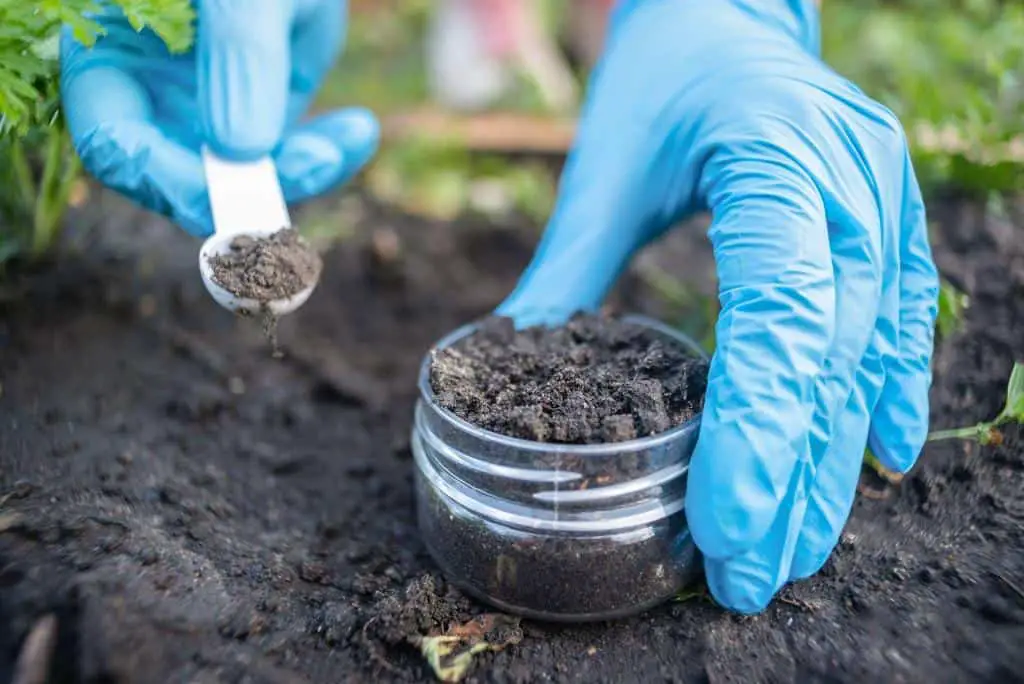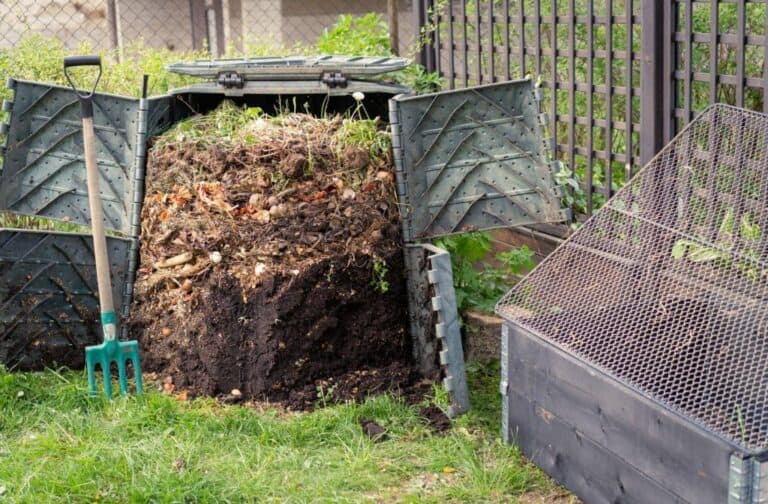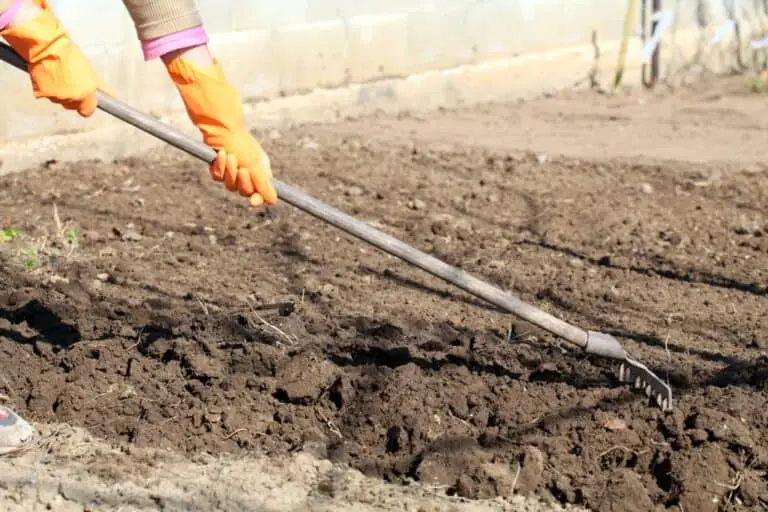How to Adjust Optimum pH Level for Growing Potatoes

As I kneeled down in my backyard, determined to cultivate the perfect potatoes, little did I realize the unsung hero beneath the soil—the mysterious pH level. Growing potatoes is more than just planting and watering; it’s a delicate dance with acidity and alkalinity that can make or break your harvest dreams.
Potatoes, a versatile and beloved staple in many households, thrive when cultivated in the right soil conditions. One crucial factor that significantly influences potato growth is the soil’s pH level.
In this guide, we’ll walk you through the ins and outs of adjusting the optimum pH level for your potato garden, ensuring a robust and bountiful harvest.From understanding why pH matters to unveiling the tricks of balancing acidity for a potato paradise, we’re about to embark on a journey that promises a spectacular payoff.
So, join me in the dirt-filled trenches of potato perfection, and let’s ensure our harvests are not just good but downright exceptional! Get ready to dig in—literally and figuratively!
Introduction to Potato Cultivation and Soil pH

Potatoes, those versatile tubers adorning our plates in myriad forms, hold a special place in home gardening. Cultivating robust potatoes needs understanding and adjusting soil pH, a crucial factor influencing growth. Picture your garden as a culinary canvas, with potatoes being the star ingredient.
Why does soil pH matter? It directly impacts nutrient availability. Think of pH as the chef’s choice of seasoning, determining the flavor of your potatoes. The ideal pH range for potatoes is between 5.8 and 6.5, creating a nutrient-rich environment. But first, how do you gauge your soil’s pH? Soil testing kits, akin to a gardening GPS, guide you to the right pH destination.
Consult the pH level table, and you’ll decipher the soil’s needs for acidity or alkalinity. In the upcoming sections, we’ll delve into the art of adjusting pH for optimal potato growth. So, grab your gardening gloves and embark on a flavorful journey to cultivate perfect potatoes in your own backyard.
Understanding Ideal pH Range for Potatoes

Now, let’s dive into the optimal pH range, the sweet spot for flourishing potatoes. Potatoes revel in slightly acidic to neutral soils, with an ideal pH range of 5.8 to 6.5. It’s in this acidity-alkalinity Goldilocks zone that the magic happens.
Straying too far in either direction can throw off the delicate balance, affecting nutrient uptake and, subsequently, potato yield. Maintaining this delicate balance ensures that our potatoes thrive, producing bountiful yields and a rich harvest. The journey into the world of potatoes continues, where the subtle interplay of soil pH sets the stage and nurtures our spuds to perfection.
The Impact of Soil pH on Potato Growth
The success of potato cultivation hinges on a delicate balance—the often-overlooked factor of soil pH. Soil pH, the measure of acidity or alkalinity, profoundly influences the growth and vitality of potatoes. Potatoes generally prefer a slightly acidic to neutral soil environment, with an optimal pH range between 5.3 and 6.5. In this range, the soil becomes a fertile ground for nutrient absorption, fostering robust tuber development and overall plant health.
Deviation from this pH-sweet spot can pose challenges. Acidic soils may limit nutrient availability, stunting potato growth, while highly alkaline soils can induce deficiencies, particularly in iron and manganese.
To navigate these nuances, you as farmer need regular soil testing, which is crucial. It reveals the current pH status, enabling farmers to implement targeted interventions. Amendments such as lime can be employed to raise pH in acidic soils, while elemental sulfur aids in lowering pH soil in alkaline soils.
Successful potato farming, therefore, is not only about planting and watering but also about understanding and managing the dynamic interplay between soil pH and potato growth requirements. This nuanced approach ensures that the soil becomes an ally in the journey toward bountiful potato harvests.
Below is a summary of the pH level of the potato plant’s growth:
Effects of Acidic and Alkaline Soil on Potato Plants
- Acidic Soil (pH below 5.8):
- Hinders nutrient absorption.
- Stunts growth and development.
- Predisposes plants to diseases.
- Alkaline Soil (pH above 6.5):
- Limits nutrient availability.
- Triggers nutrient deficiencies.
- Affects overall plant health.
Testing Soil pH for Potatoes

Understanding your soil’s current pH is akin to deciphering a gardening code. Fear not; the process is simpler than it sounds.
Step-by-Step Guide on How to Test Soil pH
- Gather Your Tools:
- pH testing kit
- Soil samples
- Collect Soil Samples:
- Dig small holes in various locations.
- Gather samples in a clean container.
- Perform the pH Test:
- Follow kit instructions.
- Observe color changes for accurate readings.
- Repeat for Accuracy:
- Take multiple samples for a comprehensive assessment.
- Average the results for a more precise pH reading.
Recommended Tools and Methods for Accurate pH Measurement
- pH Testing Kits:
- Convenient for home use.
- Affordable and accessible.
- Digital pH Meters:
- Provide quick and accurate readings.
- Ideal for more frequent testing.
Interpreting Soil pH Test Results
You’ve unveiled the pH secrets of your soil—now, let’s decode the results.
Explaining the Results of Soil pH Tests
- Slightly Acidic (pH 5.8-6.5):
- Ideal range for potatoes.
- Nutrient availability is optimal.
- Acidic (pH below 5.8):
- Implement gradual lime incorporation.
- Re-test after adjustments.
- Alkaline (pH above 6.5):
- Introduce elemental sulfur for pH reduction.
- Monitor pH levels consistently.
Addressing Common Issues and Misconceptions in Interpreting pH Data
- Misconception: “Lower pH is always better.”
- Clarification: Aim for the optimal range; extremes can be detrimental.
- Issue: “pH fluctuates too much.”
- Solution: Implement gradual adjustments and monitor regularly.
- Misconception: “Once adjusted, pH stays constant.”
- Clarification: Soil conditions change; periodic testing is crucial.
Adjusting Soil pH for Optimal Potato Growth
With your soil’s pH profile unveiled, let’s navigate the terrain of adjustments, ensuring your potatoes revel in the perfect pH symphony.
For Acidic Soils (pH Below 5.8)
- Incorporate Lime Gradually:
- Choose agricultural lime for gradual pH elevation.
- Distribute evenly and work into the soil.
- Consider Dolomitic Lime:
- Ideal for soils lacking magnesium.
- Ensure balanced nutrient availability.
- Re-Test After Adjustments:
- Patience is key; changes take time.
- Reassess soil pH to gauge progress.
For Alkaline Soils (pH Above 6.5)
- Introduce Elemental Sulfur:
- Sulfur facilitates pH reduction.
- Follow recommended application rates.
- Enhance with Organic Matter:
- Amend topsoil with compost.
- Boosts soil structure and increase soil fertility.
- Regular pH Monitoring:
- Maintain vigilance for consistent levels.
- Adjust as needed throughout the growing season.
Best Practices for pH Adjustment
- Gradual Changes:
- Avoid abrupt pH swings; plants need time to adapt.
- Aim for incremental adjustments over weeks.
- Regular Monitoring:
- Periodically test pH throughout the growing season.
- Detect and address changes promptly.
- Organic Amendments:
- Integrate compost for pH adjustments and enhanced fertility.
- Nourish the soil as you fine-tune pH.
- Mulching Magic:
- Apply organic mulch to regulate soil moisture.
- Creates an optimal environment for potato growth.
Understanding and Mitigating Effects
To truly pave the way for a robust potato harvest, understanding the nuanced effects of alkaline soil is crucial. Beyond altering pH, consider the broader impact on your potato plants:
- Nutrient Uptake: Improved pH enhances nutrient availability, promoting better uptake of essential elements crucial for robust tuber development.
- Root Health: Addressing alkalinity fosters healthier root development, allowing potatoes to access water and nutrients efficiently.
In essence, by embracing these solutions and gaining insights into the intricacies of alkaline soil, you empower yourself to create an environment where potatoes not only survive but thrive. Your efforts translate into a more resilient and abundant potato harvest, fulfilling the promise of a flourishing garden.
FAQs
Can I use vinegar to lower soil pH for potatoes?
While vinegar contains acetic acid, it’s not the best option for large-scale pH adjustment. It can be impractical and may harm the soil structure. Opt for organic methods like compost or elemental sulfur for safer, more effective results.
How often should I test the soil pH for potatoes?
Test your soil at least once a year, preferably before planting. This ensures you’re aware of any pH changes and allows for timely adjustments, maintaining an optimal environment for potato growth.
Is it possible to adjust pH levels quickly for potatoes?
Quick adjustments can stress plants. It’s advisable to make gradual changes over weeks or months, promoting a healthier adaptation to the new pH environment.
Are there natural ways to increase soil pH for potatoes?
Yes, organic methods like incorporating lime or using wood ash are effective natural ways to raise soil pH. They not only adjust pH but also contribute valuable nutrients to the soil.
What’s the impact of pH on potato taste?
pH influences nutrient availability, which in turn affects the taste and quality of potatoes. Maintaining the optimum pH range ensures potatoes absorb essential nutrients, resulting in flavorful and well-textured tubers.
Can I adjust the pH of potato soil using coffee grounds?
While coffee grounds add organic matter, their impact on pH adjustment is minimal. Opt for more potent methods, like incorporating lime, for effective control over soil acidity in potato cultivation.
How does pH adjustment impact potato yield?
Proper pH levels, within the 5.8 to 6.5 range, optimize nutrient availability for potatoes. This enhances growth, leading to increased yields. Ensure your soil acidity for potato growth is well-balanced for optimal results.
Can acidic soil affect the skin color of potatoes?
Yes, excessively acidic soil can affect potato skin color. It may lead to discoloration or uneven pigmentation. Adjust soil pH levels to provide the right environment for consistent and appealing potato skin tones.
What’s the role of pH in preventing potato diseases?
Maintaining the correct pH level creates an environment less conducive to certain diseases. Potatoes are particularly vulnerable to diseases in extreme pH conditions. Regular pH adjustment contributes to a healthier soil balance, reducing the risk of diseases in potato cultivation.






